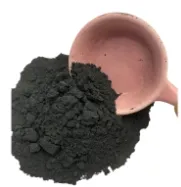
The Process of Iron Ore Concentration: Key Facts for Industry Insights
Iron ore is a vital resource in the global steel-making industry. With rising demand for steel and other iron-based products, the concentration of iron ore has become increasingly important. By concentrating iron ore, it is possible to separate valuable materials from impurities, improving the quality and efficiency of the raw material. This article will explore various aspects of iron ore, including its types, concentration processes, and its price fluctuations in the market, especially in China.

Types of Iron Ore and Their Percentages
Iron ore comes in several types, each with distinct characteristics and uses. The two main categories of iron ore are hematite and magnetite, but there are other types as well. Hematite, with its iron content of about 60-70%, is the most widely used and traded. It is predominantly used in blast furnaces. Magnetite, on the other hand, contains around 72% iron, but it requires additional processing before it can be used in steel-making, which makes it a bit more expensive. Limonite and siderite are other less common ores, with varying iron content, usually between 40-60%. Understanding these types is crucial for determining the suitability of ore for different steel production processes.
Iron Ore Pellet Price in China
China, as the world's largest steel producer, plays a significant role in determining iron ore pellet prices. In recent years, the iron ore pellet price in China has seen notable fluctuations, influenced by supply and demand, governmental policies, and global economic conditions. As of 2025, the price of iron ore pellets in China has been influenced by factors such as China's steel output, industrial growth, and environmental regulations. Pellet prices can vary, ranging from $100 to $150 per ton depending on the quality of the product and the time of year. Knowing the price trends in China is essential for businesses involved in the procurement of iron ore as it helps with budgeting and cost management.
How Iron Ore Is Concentrated
The concentration of iron ore is typically achieved through a variety of processes, depending on the type of ore and the desired outcome. Common methods include gravity separation, magnetic separation, and flotation. Gravity separation uses the difference in densities between ore and gangue (unwanted materials) to separate them. This method is effective for ores like hematite. Magnetic separation is particularly useful for ores containing magnetite, as the iron minerals are magnetic, and they can be separated from the non-magnetic waste. Flotation, often combined with other techniques, is another process used to concentrate ores with lower iron content. Each method ensures that iron ore is purified and concentrated, ready for the next stages of steel production.
Economic Impact of Iron Ore Concentration in China
The economic importance of iron ore concentration cannot be overstated, especially in China, where iron ore is a primary raw material for the steel industry. As China’s steel demand remains high, the efficiency of iron ore concentration plays a direct role in controlling the cost of steel production. Increased concentration leads to higher-quality ore, which in turn results in better efficiency and less energy consumption during the smelting process. For example, by upgrading the iron ore before use, Chinese steelmakers can reduce costs, making their steel competitive on the global market. The impact is far-reaching, influencing everything from pricing strategies to employment in the mining and production sectors.
Future Trends in Iron Ore Concentration
As the steel industry continues to evolve, the methods used for iron ore concentration are also advancing. Technological innovations in automated processes and the increasing use of artificial intelligence are shaping the future of the concentration process. More precise and efficient methods are being developed to enhance the purity of iron ore. Additionally, the focus is shifting toward sustainable practices, with recycling and the reuse of iron-based materials playing an increasing role in meeting demand. As environmental concerns grow, China and other major steel producers are looking to develop cleaner, more energy-efficient ways to concentrate iron ore, which will undoubtedly influence global pricing and production.
Hematite FAQs
What are the different types of iron ore?
Hematite and magnetite are the two main types of iron ore, with hematite being the most widely used. Other types include limonite and siderite, but they are less common and often less economically viable due to their lower iron content.
How is iron ore concentrated?
Iron ore is concentrated using processes like gravity separation, magnetic separation, and flotation, depending on the type of ore and the desired outcome. These methods separate valuable iron from unwanted materials.
What factors affect the price of iron ore pellets in China?
The price of iron ore pellets in China is influenced by factors such as demand for steel, global supply chains, governmental policies, and fluctuations in the world economy.
Why is iron ore concentration important?
Concentrating iron ore increases the purity of the ore, making it more efficient for steel production. It helps reduce costs, improve quality, and make the production process more energy-efficient.
What is the future of iron ore concentration in China?
The future of iron ore concentration in China is focused on improving efficiency through automation and AI, while also pursuing sustainable practices and cleaner methods of production to reduce environmental impact.
Aqsam
-
The Process of Iron Ore Concentration: Key Facts for Industry InsightsAħbarijietAug.04,2025
-
Silicon Carbide: The Powerhouse Material for IndustryAħbarijietAug.04,2025
-
Iron Oxide Pigments: The Color of InnovationAħbarijietAug.04,2025
-
High Alumina Cement: A Durable Solution for Modern ConstructionAħbarijietAug.04,2025
-
Fluorspar Powder: The Unsung Hero of Modern IndustriesAħbarijietAug.04,2025
-
Barite Powder: Essential for Modern Oil DrillingAħbarijietAug.04,2025






